22 June, 2015
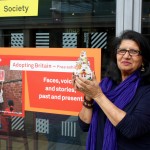
Things are super busy at Migration Museum Project – we can currently be found in several locations! Have a look below for a snapshot of our current exhibition locations and be sure to visit our Events page for full details of these and all associated events. Follow us on Twitter @MigrationUK and sign up to the mailing list to stay up to date with our activity.
Keepsakes & 100 Images of Migration at Southbank Centre, London
Our first Keepsakes display and a huge selection of our 100 Images of Migration touring exhibition form part of Southbank Centre’s Adopting Britain exhibition, which they have curated in partnership with Counterpoints Arts and with contributions from a wonderful range of artists and organisations. Interactive, multi-media, and with lots of opportunity to contribute your personal stories and responses, this exhibition is not to be missed!
On until 6 September 2015. To make a day of it, check the Southbank Centre website to see all the great activity (much of it free) they have happening over summer.
Find out more
100 Images of Migration at Wardown Park Museum, Luton
Our flagship exhibition has found a simultaneous temporary home at Wardown Park Museum in Luton, where you can see this fascinating and moving selection of photographs up until 19 July 2015. Situated in a beautiful Victorian House within a landscaped park, around one and a half miles north from the centre of Luton, the Wardown Park Museum is a great place to explore Luton’s people and heritage, regiment history and its relationship with lace.
Visit Luton Culture to see what else is on offer at the museum while our exhibition is there – such as a Sikh Fortress Turban spotlight loan from the British Museum.
Find out more
Germans in Britain at the University of Reading
The University of Reading is the latest host of Germans in Britain, an exhibition which explores the long and complex story of Anglo-German relations (there’s a lot more to it than war and football!) and the huge contribution of German migrants to Britain over the centuries. The Modern Languages and European Studies department at the University of Reading is hosting a number of associated talks to enable visitors to delve into particular themes and periods – all details can be found in our Events pages. On until 24 March 2017.
Find out more
RE·THINK Migration at the National Maritime Museum
We are delighted to be working with the National Maritime Museum to engage visitors, school groups and community groups in their RE·THINK space, which until mid-November focuses on our favourite theme: migration! In addition to self-led and volunteer-led activities guiding you to explore, discover and reflect on and respond to migration-related questions and content, there will be a range of events and workshops in the space over the next 6 months. It all kicks off with Let Us In on Saturday 27 June – a powerful drama performance by the hugely talented A Level students of Corelli College.
Find out more
9 June, 2015
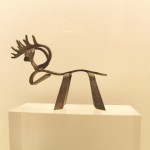
In this Guest Blog, Sue McAlpine, freelance curator with the Migration Museum Project, gives us an insight into her Keepsakes experience.
When the Migration Museum Project asked me earlier this year to curate their Keepsakes exhibition – I had previously curated 100 Images of Migration at Hackney Museum in 2013, the first time that particular exhibition had been displayed – I jumped at the chance. I felt it chimed well with the work I had been doing at Hackney collecting people’s stories and objects. Everybody has a keepsake and a story to tell, I think, and I love hearing those stories – even more, I love giving people an opportunity to have their voices heard so that they can feel proud of their culture, share it with others and pass it on to their children. Keepsakes seemed a perfect way to do this.
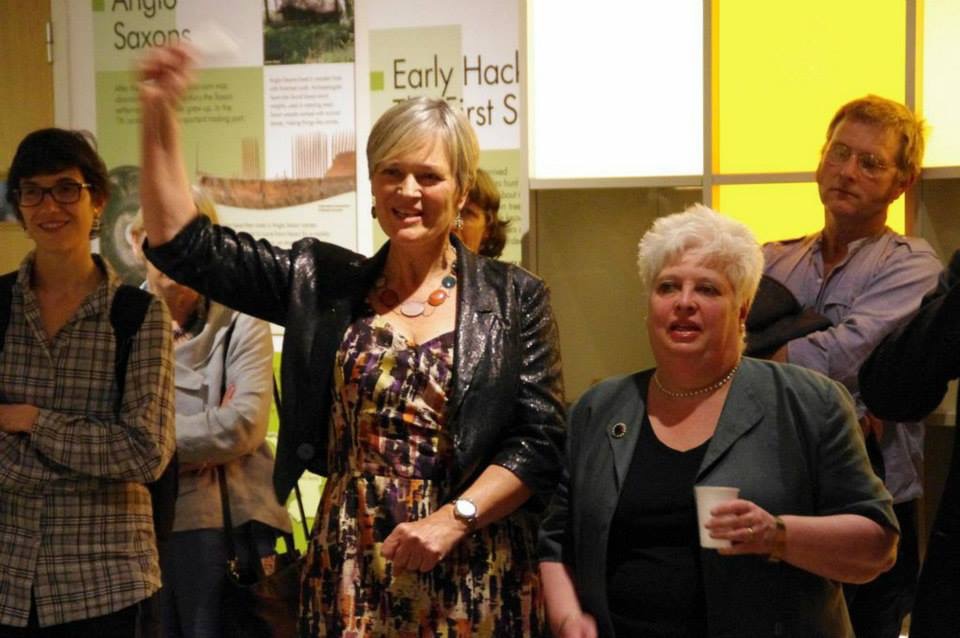
Our guest blogger Sue McAlpine celebrating the launch of 100 Images of Migration at Hackney Museum in 2013. © Migration Museum Project
But collecting keepsakes turned out to be very different from collecting objects destined to end up in a museum, displayed for a time in a case and then wrapped in tissue paper and kept in an archival box in a museum store. The process of meeting the contributors, finding the keepsakes and hearing the stories seemed more personal and intimate. I liked the fact that these objects had a life of their own beyond being simply museum objects.
![2a Keepsakes contributors at Southbank Centre [Colour+Full]](http://migrationmuseum.org/wp-content/uploads/2015/06/2a-Keepsakes-contributors-at-Southbank-Centre-Colour-Full1.jpg)
Keepsakes contributors share their keepsake stories at a celebration event at Southbank Centre on 2 May 2015. L–R Robert Winder (MMP Trustee and discussion chair), Maurice Nwokeji, Henning Wehn, Sajeela Kershi (honorary guest), Alishah Akram. © Migration Museum Project
What do we mean by the word ‘keepsake’? A keepsake is a very special thing that we keep to remind us of a person, or a place or a memory. It might have travelled with us in a suitcase from another country; we might have found it here; it might have been passed down through generations in the family. And, in a key difference from other museum objects, keepsakes are only loaned: once the exhibition they are part of is over, they are no longer part of the museum’s collection. The keepsakes that we have displayed at the Southbank Centre, for example, as part of the Adopting Britain exhibition in London’s Royal Festival Hall, will return to their owners once the exhibition is over, to continue their journey.
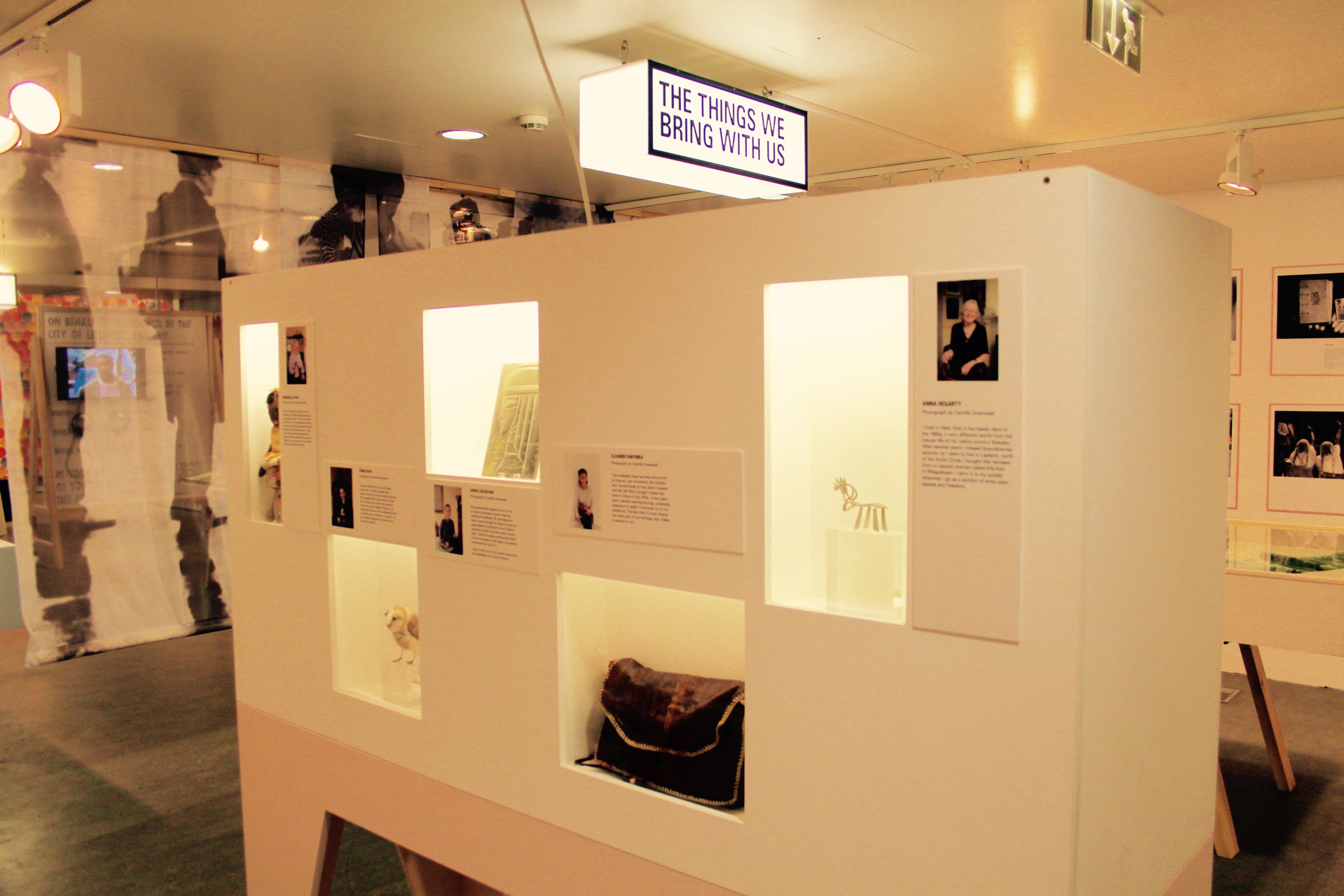
Keepsakes display in the Adopting Britain exhibition at Southbank Centre. © Migration Museum Project, photo by Poppy Williams.
I travelled to Peru in 1976 and bought a soft alpaca baby’s hat, which my son wore when he was born a year later. I still have it and, as part of our Keepsakes work with communities, took it to show a group of Latin American women in South London. Although it’s personal to me, it belongs to their culture. One of the Peruvian women, Celeste, quietly mended the holes in the hat, so now my keepsake has another chapter to its story. Who knows what its future might be? Perhaps keeping warm the tiny head of a future grandchild.
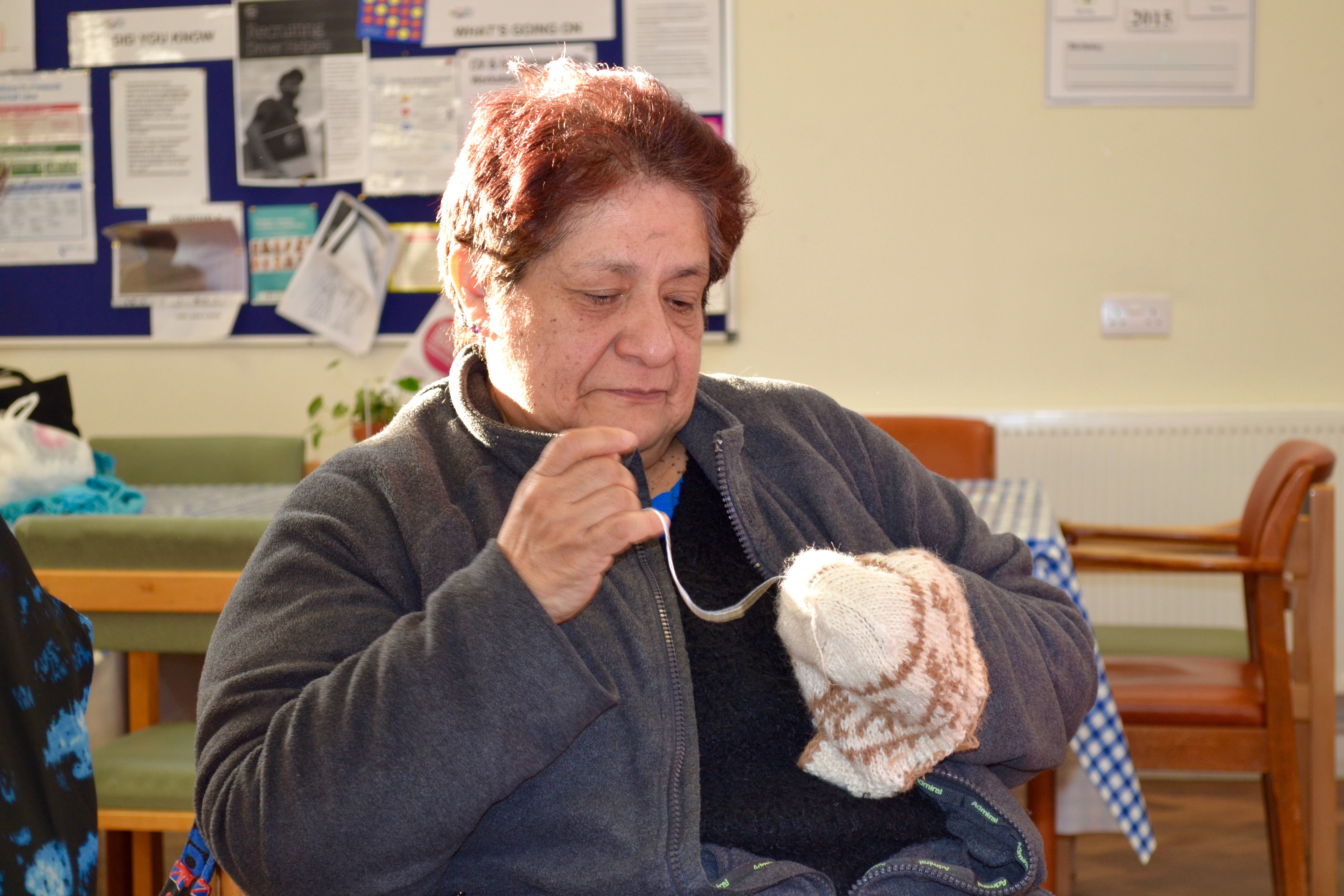
Celeste mends Sue’s Keepsake – a Peruvian hat her son wore as a baby. © Migration Museum Project, photo by Sue McAlpine.
Many migrants or refugees have suffered pain and loss: they may have escaped war or persecution in their own countries and, for many reasons, find it hard to put their story into words. It’s too raw. Many people don’t necessarily want to be identified by their story. But talking about a keepsake seems freer and easier.
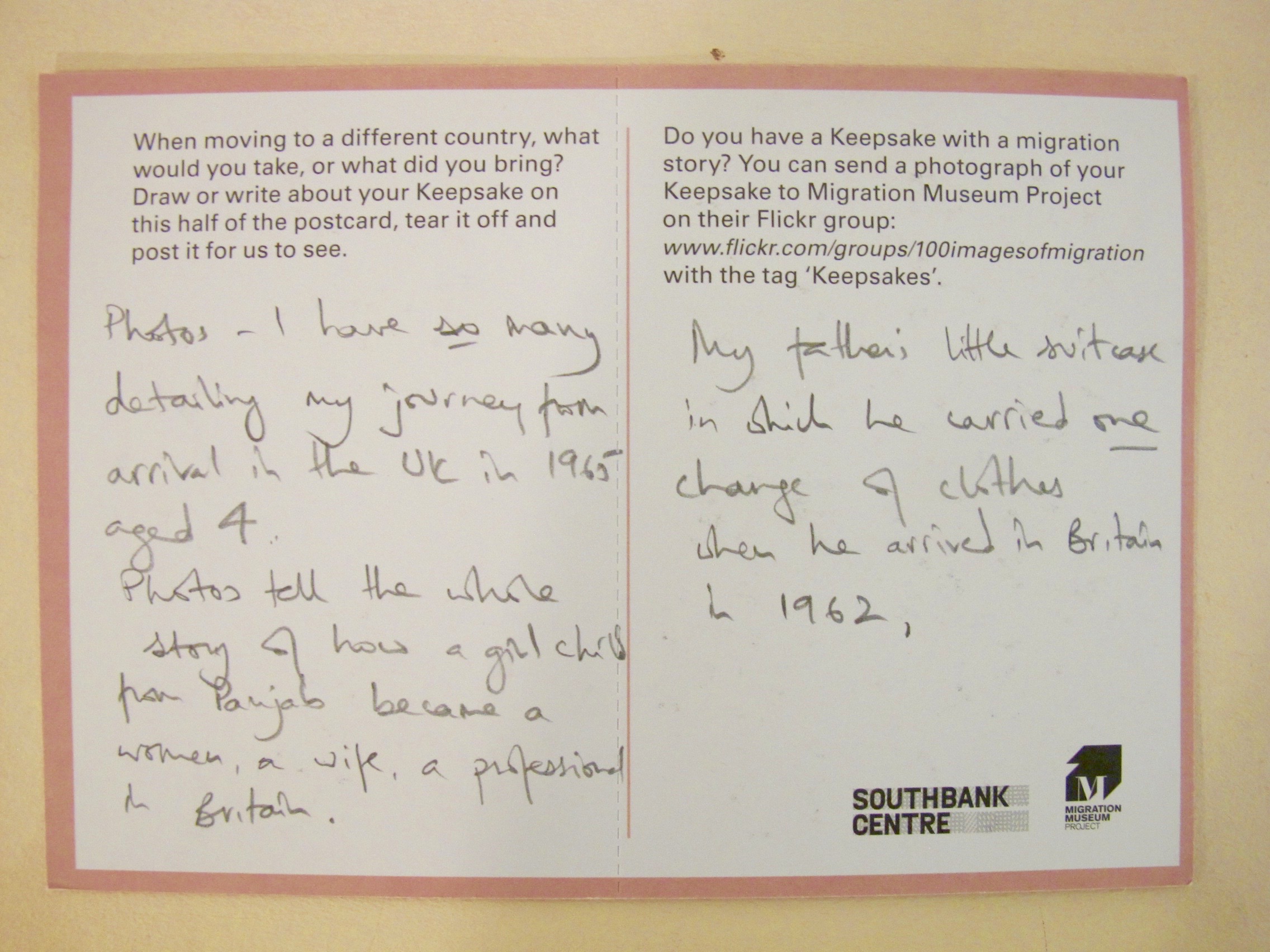
Keepsakes postcard – a visitor to Adopting Britain shares a little about her family keepsakes, just hinting at the depth of stories behind them. © Migration Museum Project, photo by Poppy Williams
I’ve known Maurice Nkoweji for some time. In 1970, he was a child in Nigeria, starving in the famine caused by the Biafran war. He and his younger brother – little boys who then knew only war and hunger – were rescued and came to this country with the Red Cross. I asked Maurice to contribute a keepsake for this exhibition and he gave me an Ekwe, a musical instrument made from a tree trunk (you can find out more about the Ekwe in Maurice’s description). He wanted to show something that reminded him of his Igbo culture and tradition in happier times. You can see a short clip of Maurice performing with his Afrobeat reggae band One Jah here, and you can watch Maurice talking about his Ekwe and arrival in Britain in this London Live TV clip.
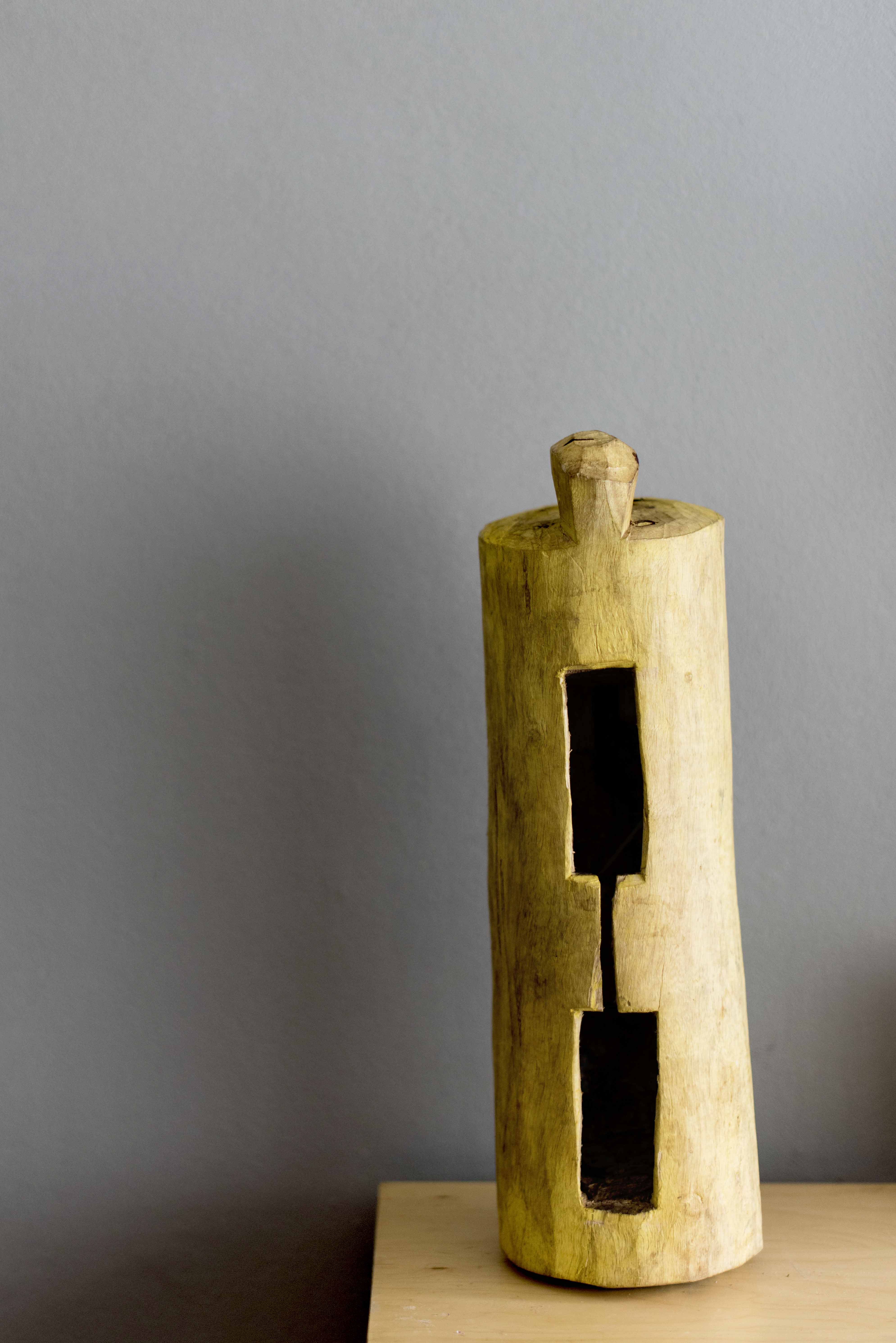
Maurice’s Ekwe photographed by Keepsakes photographer Camilla before moving into its temporary home in the Adopting Britain Keepsakes display. © Camilla Greenwell
Anna Hegarty lent a tiny metal reindeer that comes from Lapland and travels with her everywhere she goes. In crowded cities it reminds Anna of the wide, open spaces of her own country.
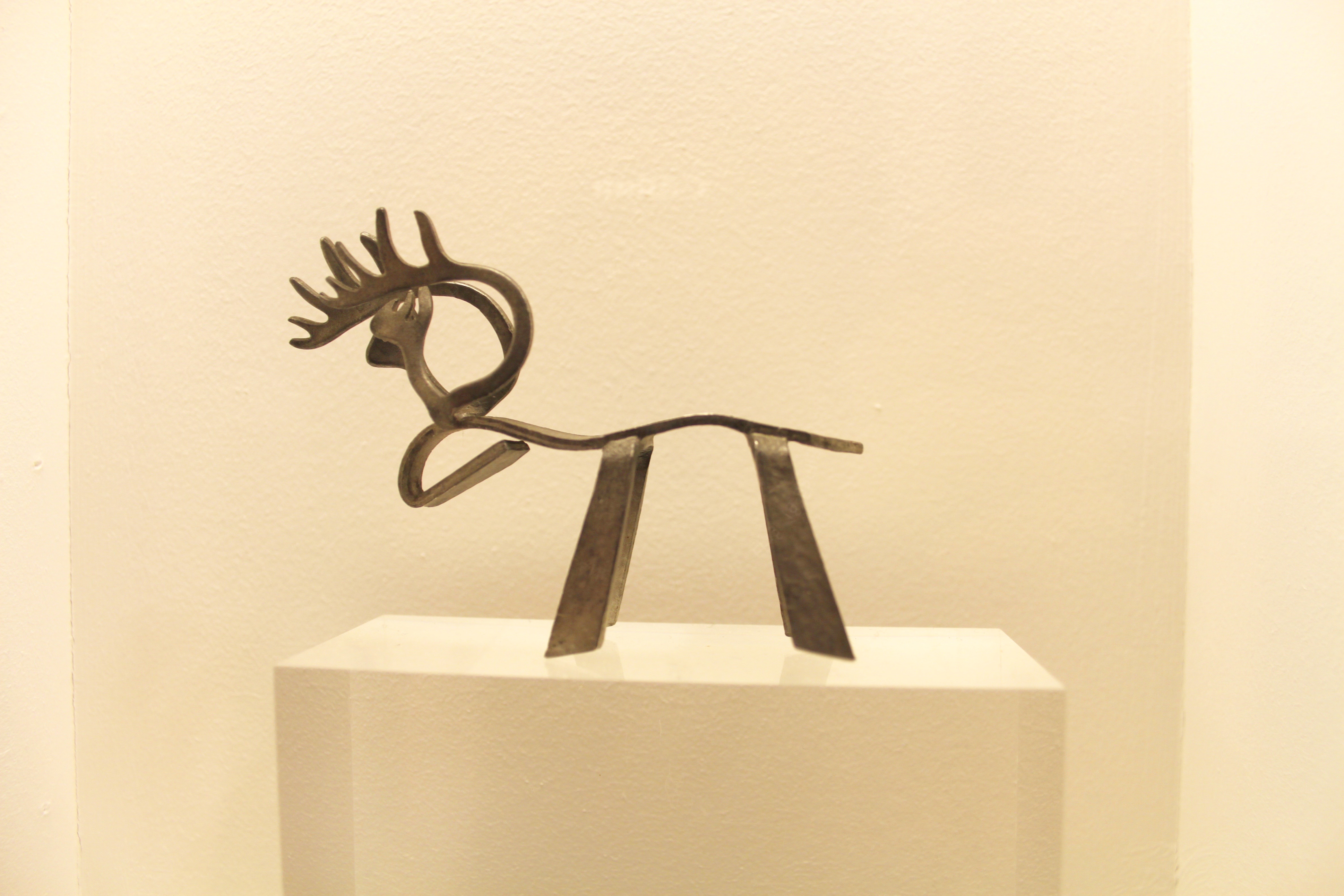
Anna’s reindeer in its temporary home – the Keepsakes display in the Adopting Britain exhibition. © Migration Museum Project, photo by Poppy Williams.
Sasha Zavjalova’s Georgian metal plate with its stylised head of a young woman helps her to imagine the mysterious land where her grandparents grew up. During the Stalinist repressions, they were forced to leave their homeland and went to live in Soviet Estonia. When Sasha came to live in Britain seven years ago, the plate came with her, continuing its own migratory journey.
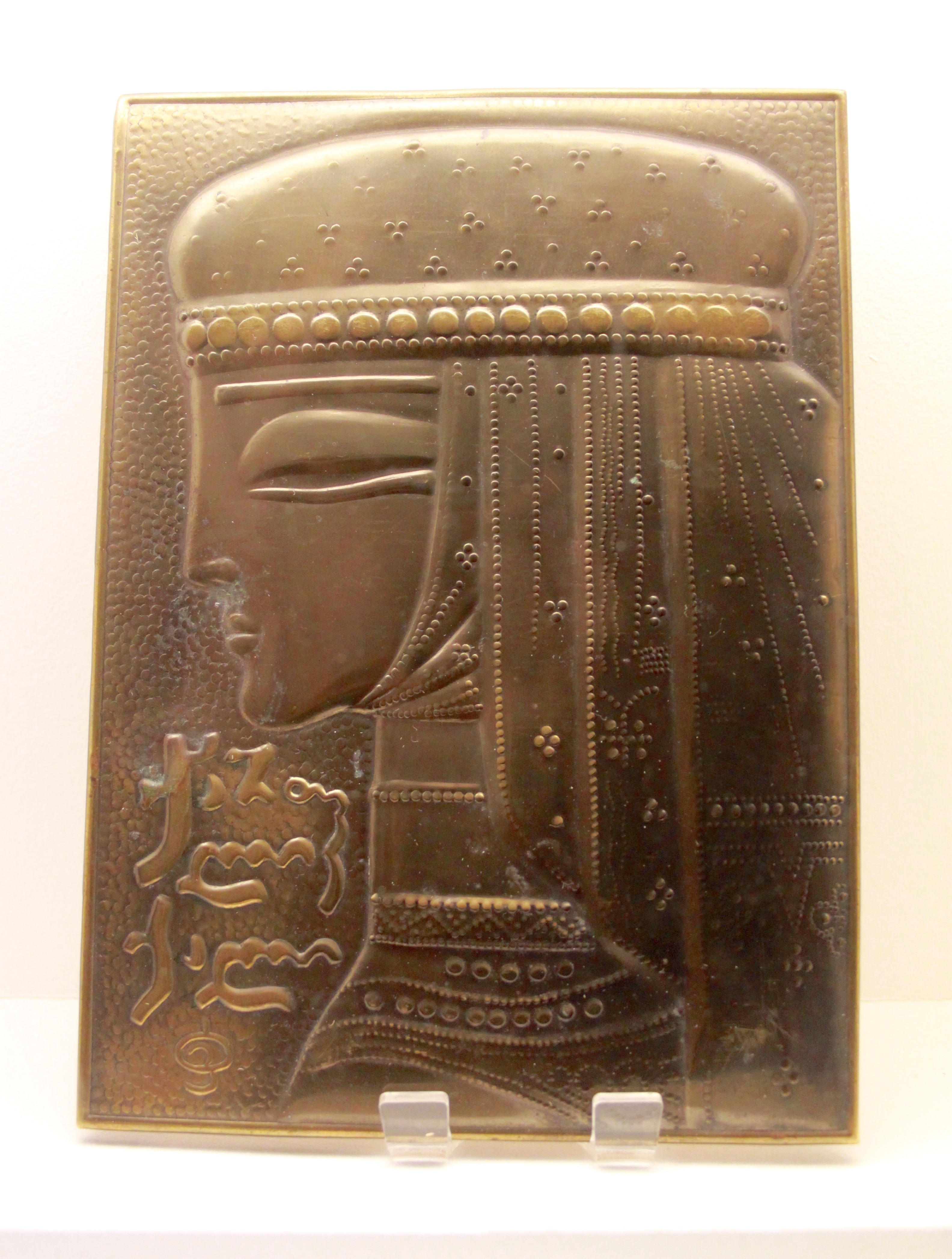
Sasha’s metal Georgian plate in the Adopting Britain Keepsakes display. © Migration Museum Project, photo by Poppy Williams
We want to continue this lovely project. We were able to show only a few keepsakes in the exhibition in London’s Southbank Centre, so we are now sharing more stories and more keepsakes with communities in South London. It’s an exciting project that’s living up to the initial high hopes I had for it. Every new engagement throws up new and exciting discoveries, so watch this space!
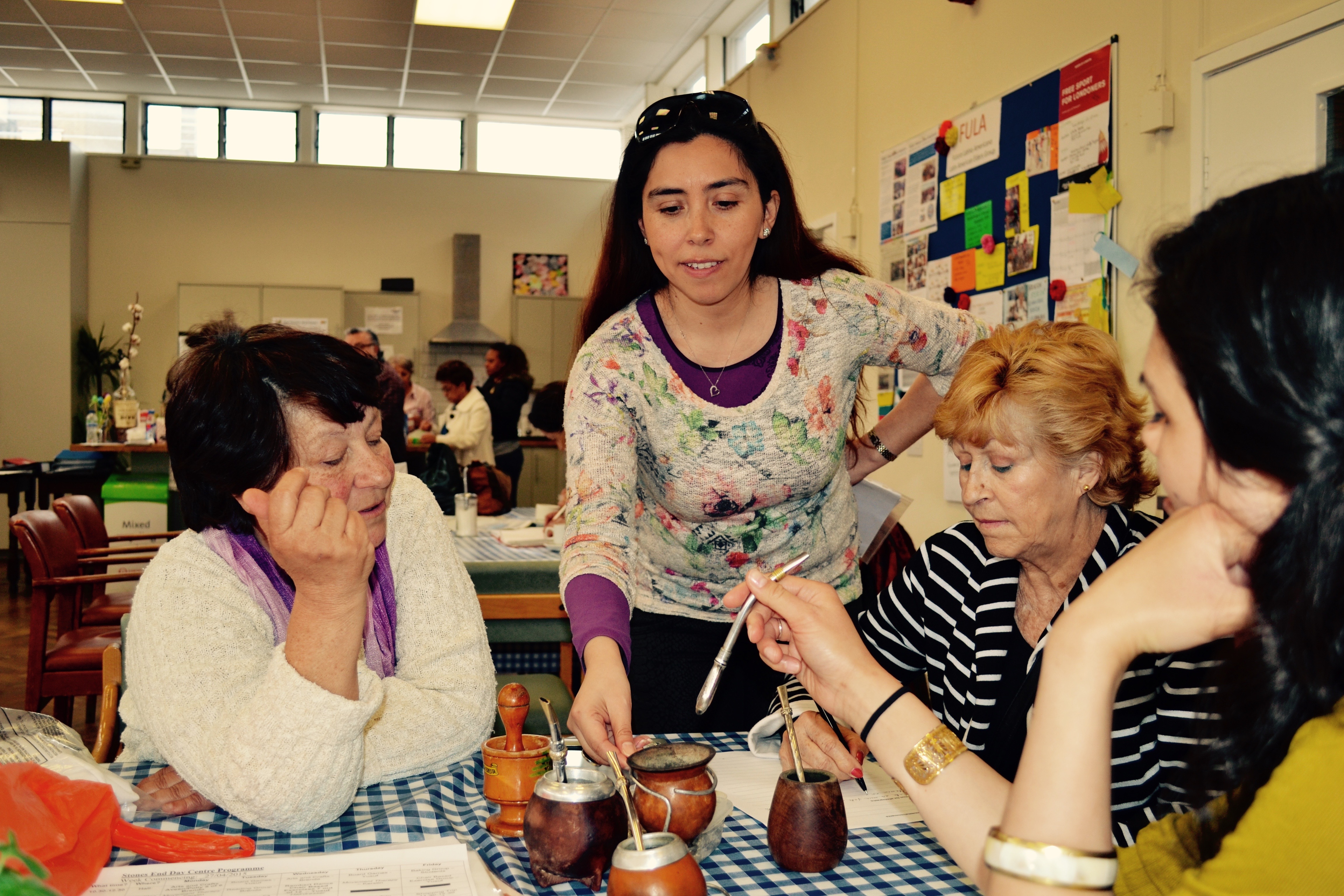
FULA (Latin American Elders) Keepsakes session. Marta brought in traditional Argentian maté gourd cups and silver straws which have been passed down from generation to generation in her family. © Migration Museum Project, photo by Sue McAlpine.
Sue McAlpine is currently freelancing as a curator, working especially in community engagement in museums. She joined Hackney Museum in 2006 curating exhibitions, managing collections and working closely with Hackney’s communities. Working backwards, before Hackney she worked in Notting Hill as a carnivalist, oral historian, exhibition designer and community historian; in 1990 she established an education service at Gunnersbury Park Museum and she was education officer at the Museum of London from 1977. Having curated the first showing of 100 Images of Migration at Hackney Museum, Sue has continued her involvement with the Migration Museum Project (of which she is a distinguished friend) and was the principal curator for the Keepsakes exhibition: a prototype of this exhibition is currently on view at the Southbank Centre, as part of the Adopting Britain exhibition.
15 April, 2015
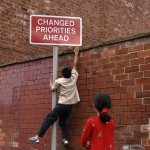
Featuring MMP Images and Keepsakes
Fri 17 April – Sun 6 September 2015⎪10am – 11pm daily
Royal Festival Hall⎪Spirit Level⎪Free admission
Exhibition Tours⎪18, 19, 25, 26 April & 2 May⎪1pm⎪Advanced Booking (Free)
Celebrating 70 Years of Migration (free public event)⎪Sat 2 May⎪11 – 3pm
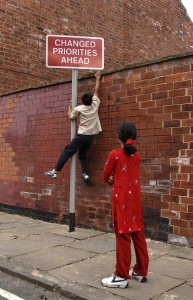
We are delighted to be collaborating with the Southbank Centre to bring a selection of 100 Images of Migration and Keepsakes to Adopting Britain, the latest exhibition presented by the Southbank Centre in partnership with Counterpoints Arts.
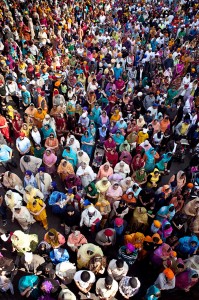
Adopting Britain: 70 Years of Migration launches on 17 April as part of the Southbank Centre’s Changing Britain festival. This interactive and accessible exhibition aims to highlight personal stories of migrants and refugees, celebrate the contribution of migrant groups to Britain’s artistic landscape and open up discussion around one of the most politically sensitive and pertinent topics of this year’s election.
For further details, please visit the Southbank Centre website.
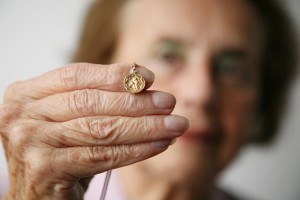
Keepsakes is a display of personal items that keep memories of migration and identity alive. Museum collections represent society’s decisions about what objects are valuable enough to hand down to future generations. But museum objects matter less to most people than the objects their parents and grandparents chose to pass on to them, and which they hand on to their own children and grandchildren.
Join us to explore the value of personal keepsakes in sharing migration stories. Do you have a Keepsake with a migration story? Tweet us @MigrationUK #Keepsakes.
Supported by the Paul Hamlyn Foundation.
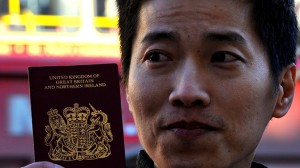
100 Images of Migration is our flagship touring exhibition and is constantly moving, growing and adapting. It began life at our launch in 2011, the result of a competition we ran in the Guardian, and has since been adapted for Hackney Museum, Senate House, Leicester University, Leicester Train Station, BBC Radio East Midlands and the Heritage Gallery in Greenwich. A selection of our 100 Images form a constant thread through the 6 thematic sections of Adopting Britain.
For more information about 100 Images of Migration and to view the online gallery, please visit our Exhibitions page.
If you have an image which tells a story of migration, join our Flickr group to add it to our online gallery.



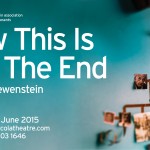


![2a Keepsakes contributors at Southbank Centre [Colour+Full]](http://migrationmuseum.org/wp-content/uploads/2015/06/2a-Keepsakes-contributors-at-Southbank-Centre-Colour-Full1.jpg)











